Samsung Announces Exynos 8895 SoC: 10nm, Mali G71MP20, & LPDDR4x
by Ryan Smith on February 23, 2017 1:45 PM EST- Posted in
- SoCs
- Samsung
- Mobile
- Exynos 8895
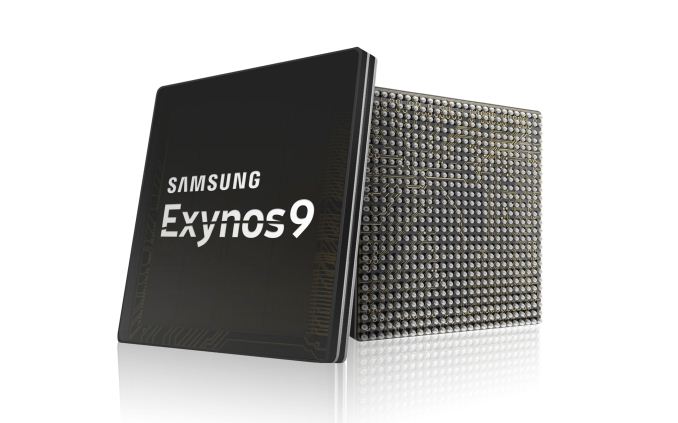
Even though Mobile World Congress doesn’t kick off for another few days, Samsung isn’t wasting any time in getting started. This morning the company is announcing their latest generation high-end ARM SoC, the Exynos 8895. Their first in-house 10nm SoC, the company isn’t talking about what it will go in, but based on the context of the announcement it’s a safe bet we’re looking at the SoC for at least some SKUs of the next Galaxy S phone.
While Samsung has been in the SoC game with the Exynos series for a number of years now, it’s been in the last few years that they’ve really cemented their positon as a market leader at the high-end. Thanks in part to the company’s 14nm process, the Exynos 7420 proved to be a very capable and powerful SoC from the company. Last year Samsung followed that up with the Exynos 8890, which among other firsts marked Samsung’s entry into designing their own CPU cores with the M1.
Now for 2017 Samsung wants to repeat their success over the past couple of years with the Exynos 9 Series 8895. As you can likely infer from the name, it’s not meant to be radically different from the preceding 8890, but there are still some pretty important changes here that should affect performance across the board.
| Samsung Exynos SoCs Specifications | |||
| SoC | Exynos 8895 | Exynos 8890 | Exynos 7420 |
| CPU | 4x A53 4x Exynos M2(?) |
4x A53@1.6GHz 4x Exynos M1 @ 2.3GHz |
4x A53@1.5GHz 4x A57@2.1GHz |
| GPU | Mali G71MP20 | Mali T880MP12 @ 650MHz |
Mali T760MP8 @ 770MHz |
| Memory Controller |
2x 32-bit(?) LPDDR4x |
2x 32-bit LPDDR4 @ 1794MHz 28.7GB/s b/w |
2x 32-bit LPDDR4 @ 1555MHz 24.8GB/s b/w |
| Storage | eMMC 5.1, UFS 2.1 | eMMC 5.1, UFS 2.0 | eMMC 5.1, UFS 2.0 |
| Modem | Down: LTE Cat16 Up: LTE Cat13 |
Down: LTE Cat12 Up: LTE Cat13 |
N/A |
| ISP | Rear: 28MP Front: 28MP |
Rear: 24MP Front: 13MP |
Rear: 16MP Front: 5MP |
| Mfc. Process |
Samsung 10nm LPE |
Samsung 14nm LPP |
Samsung 14nm LPE |
The big deal for Samsung of course is that the Exynos 8895 is their first 10nm SoC, designed by Samsung LSI and fabbed by Samsung. Semantics of what is or isn’t 10nm aside, Samsung’s 10nm LPE process is cutting-edge for a mobile SoC, and relative to the current 14nm process offers better density and better performance characteristics. Samsung has talked about the process a bit in the past, and for the Exynos 8895 announcement they are reiterating that the 10nm LPE process offers “up to 27% higher performance while consuming 40% less power” relative to 14nm. However this may be in error in phrasing on Samsung's part, as last year it was "27-percent higher performance or 40-percent lower power consumption", which is a more realistic statement. Either way, for 8895 in particular, Samsung isn’t talking about performance quite yet.
Diving into the specs, the CPU situation looks a great deal like the previous 8890. Samsung has gone with 8 cores – 4 high-power, 4 low-power – with a mix of custom and licensed silicon. The high-power cores are composed of what Samsung is calling a “2nd generation” custom CPU core. This would presumably be a newer iteration of the M1 (so the M2?), but Samsung isn’t offering up much in the way of details at this time over what’s changed from the M1. What we do know is that Samsung is touting that it offers both better performance and improved energy efficiency. Meanwhile low-power work is once again being provided by ARM’s Cortex-A53. (ed: which on 10nm, must be absolutely tiny, considering that a core was sub-1mm2 on 14nm)
Meanwhile on the GPU side, Samsung has significantly upgraded their graphics capabilities by tapping ARM’s latest-generation Mali-G71 GPU in an MP20 configuration. Based on ARM’s new Bifrost GPU architecture, the G71 radically overhauls the internal workings of the GPU to match the contemporary thread level parallelism (TLP)-centric nature of desktop GPUs and modern workloads. ARM has previously discussed that they expect G71-based devices to offer around 50% better graphics performance than T880 devices, and Samsung is going one step further by touting it as 60% faster performance.
In another first for Samsung, the 8895 is also their first Heterogeneous System Architecture (HSA) compliant SoC. This requires that the CPU, GPU, and interconnect all support HSA, and indeed all of the necessary pieces have come together for 8895. We’ve previously seen that the Mali-G71 GPU is HSA-compliant, and meanwhile for the 8895 Samsung has rolled out a new version of their interconnect (the Samsung Coherent Interconnect) to support HSA. This isn’t a development that I expect will have immediate ramifications, but HSA is ultimately at the core of making it easier for developers to program applications that use the GPU in a compute context, thanks to the common (and common-sense) architecture rules for HSA.
To feed the resulting beast, Samsung has added support for LPDDR4x memory. An extension of the original LPDDR4 standard, LPDDR4x is designed to reduce DRAM power consumption by up to 20% by reducing the output driver power (I/O VDDQ voltage) by 45%, from 1.1 V to 0.6 V. LPDDR4x memory has just started shipping, so along with the previously announced Snapdragon 835, the Exynos 8895 is the other high-performance SoC coming out this year to support the new memory.
The Exynos 8895 is also getting an upgraded ISP. The latest ISP supports 28MP for both the front and rear cameras, while a bit more nebulously, Samsung’s spec sheet also lists support for “28MP+16MP Dual Camera” mode, an unsurprising development given the recent popularity of dual camera phone designs. Diving a bit deeper, we find that the 8895’s ISP is actually two ISPs: a high-performance ISP and a low-power ISP, with the low-power ISP presumably providing the aforementioned 16MP capability. Samsung is touting this combination as allowing them to offer dual camera functionality while still keeping power consumption in check.
On the flip slide of the coin, the Exynos 8895 also gets a new version of Samsung’s video decode block, which the company calls their Multi-Format Codec (MFC). This latest MFC supports all the bells and whistles you’d expect, with both HEVC and VP9 decoding up to 4Kp120. Samsung’s press release also briefly mentions a “video processing technology that enables a higher quality experience by enhancing the image quality” that’s capable of “enhancing the image quality of a specific portion that is perceived more sensitive to the human eye.” Given the VR applications – and Samsung wants to be able to do 4K VR – this sounds a bit like a variation on the idea of foveated rendering, but there aren’t any further details on the technology at this time.
Also appearing for the first time on the Exynos 8895 is Samsung’s Cat16 LTE modem design. With their modem Samsung is using 5x Carrier Aggregation to achieve up to 1Gbps down, while uploading is rated at LTE Cat 13, using 2 carriers to get 150Mbps up. What’s notable here is that, as best as I can tell, this is the first modem using 5x CA; Qualcomm’s equivalent modem, the X16, uses 3 or 4x CA depending on the scenario. Unfortunately with the limited details Samsung offers right now, I’m not sure whether they have to use 5x CA to get Cat 16 bandwidth, or this is just another optional mode.
Finally, the Exynos 8895 also includes what Samsung is calling an “enhanced security sub-system with a separate security processing unit” for use with user authentication, mobile payments, and the like. Based on Samsung’s description this sounds a heck of a lot like Apple’s Secure Enclave, which would be a very welcome development, as in Apple’s case it has made their phones a lot harder to break into.
Wrapping things up, along with today’s product announcement of the Exynos 8895, Samsung is also announcing that the SoC is in mass production; and indeed I would be surprised if this isn’t the SoC they announced back in October, which would mean it’s been in production for some time now. We still don’t know when we’re going to see the next Samsung Galaxy S phone, but given how Samsung is announcing the SoC in this fashion, clearly it’s going to be sooner than later. In the meantime, hopefully we’ll get some additional SoC details next week at MWC.
Source: Samsung Newsroom


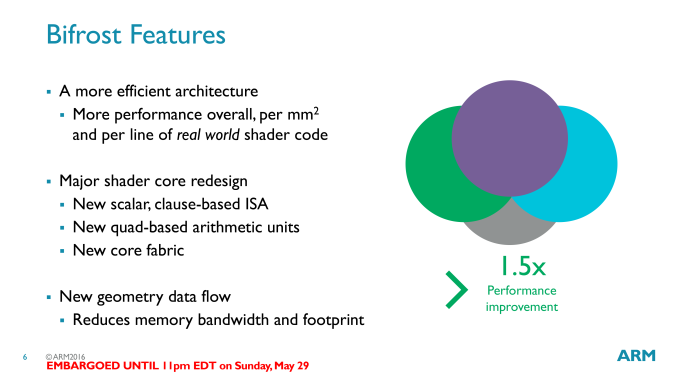
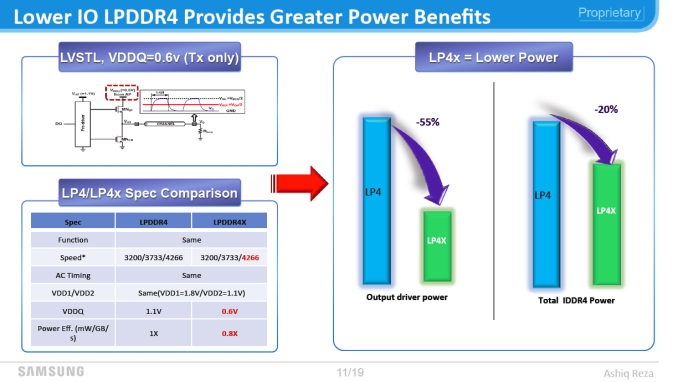
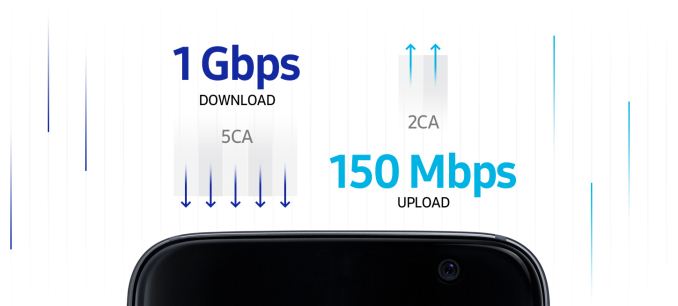
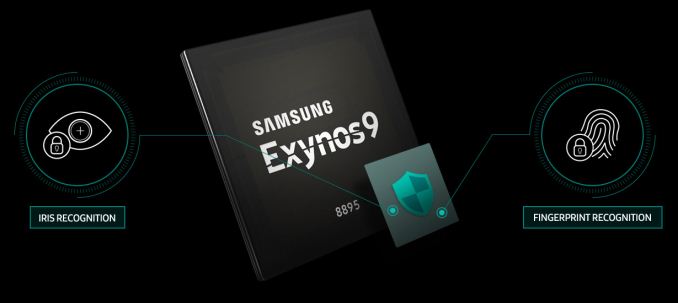








25 Comments
View All Comments
Bullwinkle J Moose - Thursday, February 23, 2017 - link
4K Video @ 120hzAbout time, now lets get this VR thing going!
lilmoe - Thursday, February 23, 2017 - link
I'm not a VR fan. I'm more interested in 4K video recording, higher bitrate, smaller file size HEVC codec for the camera (as an option). Or, 1080p even higher bitrate HEVC video, with same or smaller file sizes as current h.264 files. It would drastically improve the video quality of the camera. Just like their NX mirrorless cameras. Computers and smart TVs nowadays are much more HEVC friendly.What kills me about Sammy is how they don't take full advantage of their market leadership in smartphones. MOST of their phones on the market support HEVC encode/decode in addition to high quality audio encode. Why the heck haven't they built a iMessage/Facetime competitor yet??? ChatOn was a complete joke. Why aren't taking advantage of their vast ecosystem to build vertically integrated services to their devices? SMH...
Bullwinkle J Moose - Thursday, February 23, 2017 - link
Not a VR Fan?You mean Not Yet!
A year ago we were waiting for Pascal Graphics to game @ 4K / 120hz
A year from now we will be streaming 4K/120hz VR games from our gaming computer directly to the cellphone strapped to our face
It sure beats strapping a 30 pound desktop computer to our backs for VR gaming without a tether cord
....and you will be wondering why you ever thought iMessage/Facetime without the $100 VR conversion kit was your main concern TODAY
THIS is why I created application and game streaming!
SydneyBlue120d - Friday, February 24, 2017 - link
Unlimited HEVC HDR encoding enabled with IOS at 2160p60 would be a real dream, however I won't believe it until I see it. The Snapdragon 835 encoder is still limited to 2160p30, I don't know if they will make different feature set for different SOC... I think the reason why no one is supporting HEVC enconding is just one: Royalties.lilmoe - Friday, February 24, 2017 - link
Probably the case. Samsung has been holding back with Galaxy S/Note features just for the sake of having 2 versions with different processors. They're not even taking full advantage of their processors. It's frustrating/stupid management decisions. Oh well...Lolimaster - Friday, February 24, 2017 - link
What we need is the best 1080p 60fps quality you can get.SydneyBlue120d - Tuesday, February 28, 2017 - link
Nope, we need both to enhance quality, and Yes I hope someday smartphones will be able to capture in AV1 format with Dolby Vision HDR 12bit 4:4:4 4320p240 with both 5 axis IOS and EIS.Araa - Friday, February 24, 2017 - link
VR is the new 3DGustavoar - Thursday, February 23, 2017 - link
The compare table is wrong, Exynos 8895 has UFS 2.1 and not 2.0. You can check for the proof in the official website: http://www.samsung.com/semiconductor/minisite/Exyn...Ryan Smith - Thursday, February 23, 2017 - link
Already corrected.=) Though for a while it was UFS 2.0 on Samsung's site.